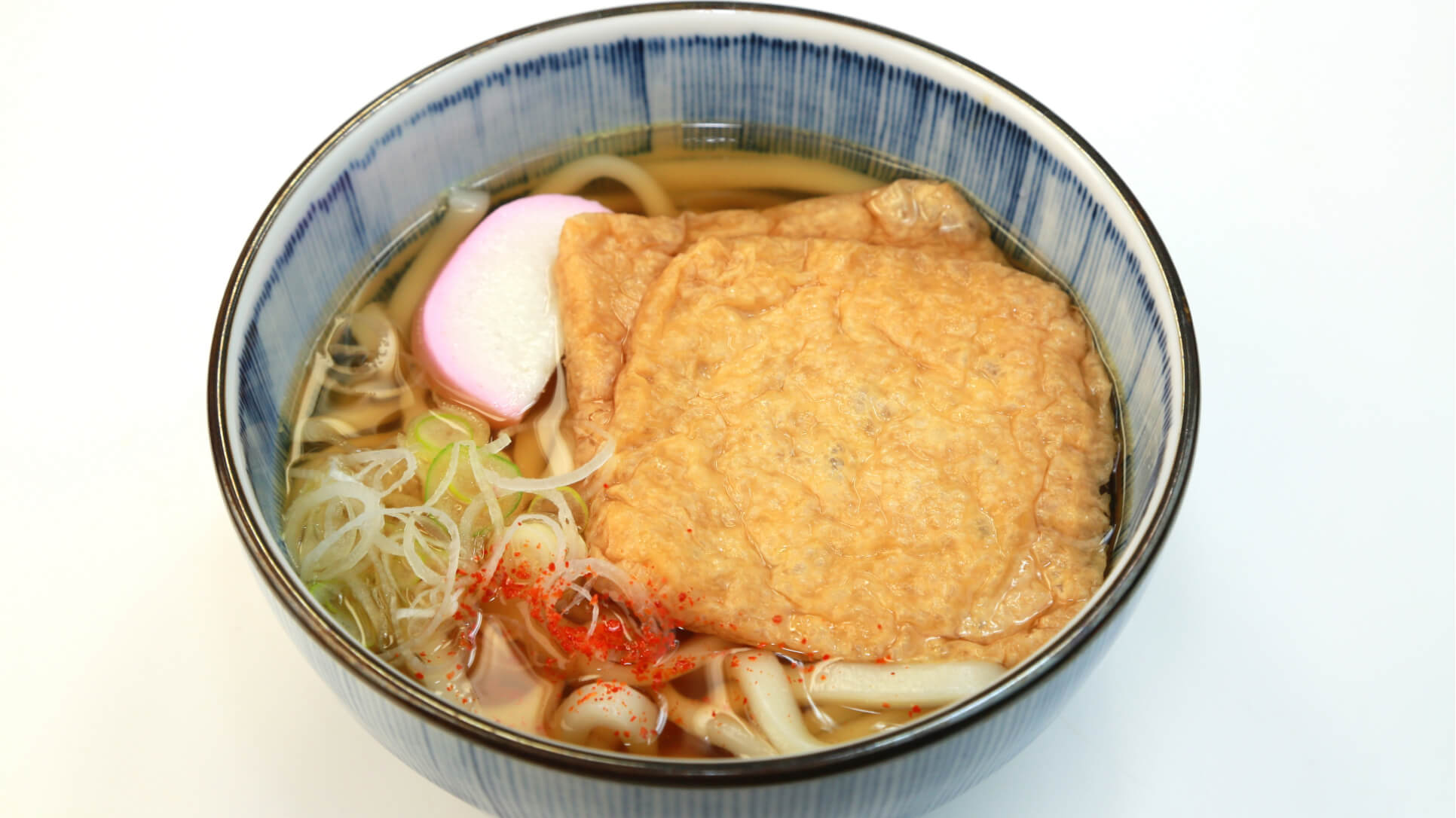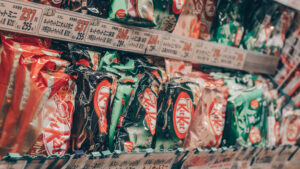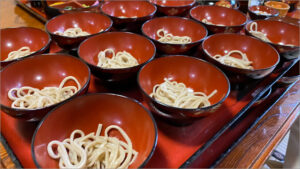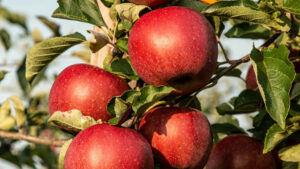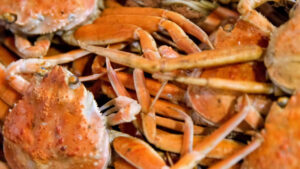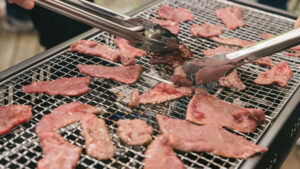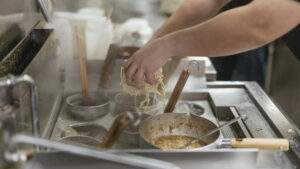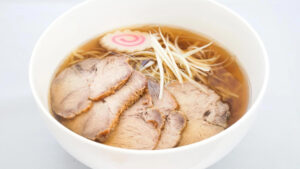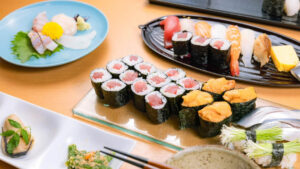Japan’s udon culture features many menu names that are quirky and easy to remember. Among them,kitsune udon and tanuki udon are very familiar to Japanese people, but their meanings actually differ by region. In Kansai and Kanto, both the ingredients and the naming vary, which can easily confuse foreign travelers. This article explains the characteristics of each dish, the background of these regional differences, how to enjoy them at nationwide chains and at home, and Japanese phrases useful when ordering. Read on, and you’ll be able to confidently order “kitsune” or “tanuki” anywhere in Japan.
Contents
Kitsune Udon and Tanuki Udon Basics
Udon is one of Japan’s most iconic noodle dishes, with many regional varieties across the country.
Among them, kitsune udon (fox udon) and tanuki udon (raccoon dog udon) are well-known names to Japanese people. Their appearance, flavor, and even definitions can differ depending on the region. Let’s begin by understanding the characteristics of each.
What is Kitsune Udon?
Kitsune udon is a hot noodle soup featuring soft, chewy udon noodles in a flavorful broth, topped with a slice of sweetly simmered aburaage (thin, deep-fried tofu). The savory broth and the gentle sweetness of the aburaage blend perfectly, creating a comforting flavor.
Originating in the Kansai region, it is now enjoyed throughout Japan.
Sweetly Simmered Aburaage
The highlight of kitsune udon is the sweet and savory simmered aburaage.
Made by deep-frying thin slices of tofu, the aburaage is then simmered in a mixture of soy sauce, sugar, and mirin. This sweetness infuses the broth, adding depth and richness.
Its soft, juicy texture evokes the warmth of Japanese home cooking.
Kansai Origins
Kitsune udon is said to have been born in Osaka, in the Kansai region.
The name “kitsune” (fox) comes from a folk belief that foxes love aburaage.
By the Meiji era, it was already on menus, spreading nationwide along with Kansai’s distinctive broth culture.
Harmony with the Broth
Kansai-style broth is characterized by its clear color and gentle flavor, made with kombu (kelp) and katsuobushi (dried bonito flakes). When combined with the sweet aburaage, it creates a well-balanced taste. The first bite delivers sweetness, the second reveals the umami of the broth, and by the end, both flavors blend into a mellow harmony.
What is Tanuki Udon?
Tanuki udon is a hot udon dish topped with tenkasu (crispy tempura bits).
Tenkasu are crunchy fragments of batter left over from frying tempura, valued for their crispy texture and savory aroma. Once they soak in the broth, they gradually soften, offering a changing taste experience. In some regions, “tanuki” refers to soba noodles instead, so travelers should be aware of these regional differences.
Tenkasu – The Star Ingredient
The main topping of tanuki udon is tenkasu—crispy pieces of tempura batter.
Originally a byproduct of tempura making, their aroma and umami flavor gained popularity, leading to their use as a deliberate topping. The richness of the oil seeps into the broth, enhancing the overall flavor of the udon.
A Simple and Affordable Bowl
Tenkasu is inexpensive and easy to store, making tanuki udon a popular and affordable dish in Japanese households. It is also a staple at train station standing noodle shops and casual eateries, offering a quick, warm meal for busy people on the go.
The Appeal of Texture and Aroma
The charm of tenkasu lies in its transformation: crispy at first bite, then soft and fluffy as it absorbs the broth. The aroma of fried batter spreads in the mouth, creating a pleasant contrast with the smooth, chewy texture of the udon noodles. This combination keeps each bite interesting until the very end.
Origins and Meanings of the Names
The names “kitsune” (fox) and “tanuki” (raccoon dog) are not directly related to the actual animals.
Instead, they come from Japanese wordplay and folk traditions. Linking the appearance or characteristics of ingredients to animal imagery reflects a uniquely Japanese way of naming dishes.
The Origin of “Kitsune”
The aburaage (fried tofu) in kitsune udon is said to be a favorite food of foxes, according to popular
folklore, which led to its name. The golden color of the fried tofu also resembles a fox’s fur, further reinforcing the association. Such connections between animals and food are common in Japanese culinary culture.
The Mystery of “Tanuki”
There are several theories about the origin of “tanuki.” One widely accepted idea is that it comes from the phrase tane nuki (literally “without seeds” or “without filling”), which was shortened and altered to “tanuki.” Here, “tane” refers to the main ingredient in tempura, so a topping of only batter without any filling would be called “tanuki.” Other theories suggest the name was inspired by its appearance or the playful sound of the word.
Animals and Food Culture
Japanese cuisine features many dishes with animal-related names. Beyond kitsune and tanuki, examples include “neko manma” (cat rice) and “tonkatsu” (pork cutlet). Such naming connects food to familiar animal imagery, making dishes more approachable and easier to remember. This cultural habit turns meals into more than just eating— it adds an element of conversation and playfulness to the dining experience.
Regional Differences
In Japan, the terms “kitsune udon” and “tanuki udon” vary in meaning depending on the region.
The differences are especially notable between Kansai and Kanto, which can be a source of confusion for travelers. Learning about their origins and history makes these variations even more fascinating.
Kansai Naming and Characteristics
In Kansai, “kitsune” refers to udon topped with fried tofu, while “tanuki” does not mean tempura bits— it refers to soba topped with fried tofu. You will rarely find “kitsune soba” or “tanuki udon” on menus here, as the naming conventions are clearly separated.
Kitsune = Udon with Fried Tofu
Kitsune udon is said to have originated in Osaka, with the long-established restaurant Usamitei Matsubaya, founded in 1893, credited as its birthplace.
Originally called “konkon udon,” the dish was inspired by inari sushi.
At first, the fried tofu was served on a separate plate alongside the noodles, but customers began placing it directly on the udon themselves. This caught on in Osaka’s merchant district of Semba and became a nationwide hit under the name “kitsune udon.”
Tanuki = Udon with Tempura Bits
In Kansai, the term “tanuki udon” is almost non-existent. Udon with tempura bits is instead called “haikara udon.” This name spread in the Taisho era, supposedly originating from a Kansai quip that “putting tempura scraps in soup is such a stylish (haikara) thing, just like those folks in Kanto.”
Broth: Kombu and Light Soy Sauce
Kansai-style udon broth is characterized by a clear color and gentle flavor, made from kombu (kelp) and katsuobushi (dried bonito flakes). It is seasoned with light soy sauce, allowing the natural umami of the ingredients to shine. The combination with sweet simmered fried tofu results in a delicate and comforting taste.
Kanto Naming and Characteristics
In Kanto, “kitsune” refers to both soba and udon topped with fried tofu, while “tanuki” refers to soba or udon topped with tempura bits.
However, it most commonly means soba with tempura bits, making its definition quite different from that in Kansai.
Kitsune = Udon with Fried Tofu
In Kanto, kitsune udon is also a familiar dish, served as hot udon topped with sweet simmered fried tofu. The broth here is darker than in Kansai, with a stronger soy sauce flavor, giving it a distinctly different impression from the Kansai style.
Tanuki = Soba with Tempura Bits
Tanuki soba is believed to have originated in the late Edo period.
At first, it featured squid kakiage (mixed tempura fritter) on soba noodles, but the dark brown color of the batter—fried in sesame oil—reminded people of a tanuki, leading to the name. Over time, the dish evolved into the simpler style of soba topped only with tempura bits, which became a beloved, affordable noodle dish.
Broth: Katsuobushi and Dark Soy Sauce
Kanto-style broth for soba and udon is characterized by its dark color and bold flavor, made with katsuobushi (dried bonito flakes) and seasoned with dark soy sauce.
The strong soy aroma pairs well with the richness of fried tofu or tempura bits, making it a warming and satisfying choice, especially in colder months.
The Spread of Kitsune and Tanuki Culture
Kitsune udon and tanuki udon originated from regional food cultures, but today they are widely available at nationwide udon chains and various eateries.
However, because the naming and ingredients are not always standardized, travelers may still encounter moments of confusion.
Menu Practices at Nationwide Chains
Major udon chains and standing noodle shops aim to respect local food traditions while also making menus easy for everyone to understand.
In particular, nationwide chains often standardize the naming and toppings so customers can enjoy the same dishes anywhere in Japan.
Marugame Seimen and Hanamaru Udon
At major chains like Marugame Seimen and Hanamaru Udon, “kitsune udon” usually means udon topped with sweet simmered fried tofu, while “tanuki udon” means udon topped with tempura bits.
Because the contents are consistent across Japan, it’s reassuring for first-time customers and foreign travelers alike.
Standardized Naming and Regional Consideration
Some chains avoid using the term “tanuki udon” altogether to prevent confusion, instead labeling it as “tenkasu udon” or “agedama udon” based on the ingredient.
In other cases, the naming is adjusted by region—Kansai-style in western Japan and Kanto-style in the east—so that locals find it familiar.
Menu Labels for Foreign Visitors
Restaurants with many overseas customers often provide multilingual menus in English, Chinese, Korean, and other languages.
Examples include “Kitsune Udon (Udon with Sweet Fried Tofu)” and “Tanuki Udon (Udon with Tempura Bits),” which describe the toppings so that customers can order without knowing the cultural background of the names.
Many menus also include photos, making it easier for travelers to understand at a glance.
Enjoying Kitsune and Tanuki Udon at Home: Easy Recipe Ideas
How to Make Sweet-Simmered Aburaage
The star topping of kitsune udon—sweet-simmered aburaage—can be easily prepared at home.
First, remove excess oil from the fried tofu by briefly boiling it in water.
Then simmer it slowly over low heat in a mixture of soy sauce, sugar, mirin and dashi broth.
Letting the flavors soak in gently ensures that each bite releases a burst of sweetness and umami.
You can make it ahead of time and store it in the refrigerator for several days, allowing you to enjoy kitsune udon anytime.
Easy Dishes with Tenkasu
The tempura bits (tenkasu) used for tanuki udon are available at supermarkets and Asian grocery stores.
Besides topping udon or soba, they can also be added to okonomiyaki (savory pancakes), takoyaki (octopus balls) or stir-fried dishes.
Their oiliness and toasty flavor add richness, bringing a quick taste of Japanese street food to your home cooking.
Adapting the Broth to Regional Styles
The flavor of the broth varies by region in Japan.
For Kansai style, use kombu (kelp) and katsuobushi (dried bonito flakes) as a base, seasoning lightly with light soy sauce for a pale, delicate color.
For Kanto style, use a stronger katsuobushi flavor and season with dark soy sauce for a richer, darker broth.
At home, you can recreate these styles easily by diluting bottled mentsuyu (noodle soup base) with water, or make it from scratch for a more authentic taste.
Souvenirs and Instant Products
Kitsune udon and tanuki udon are not only enjoyed on-site at restaurants but can also be taken home as souvenirs or prepared easily at home.
Many products are available in bagged noodle and cup noodle form, making them a convenient way to relive your travel memories.
Variety of Bagged and Cup Noodles
Japanese supermarkets and convenience stores offer a wide selection of bagged and cup noodles featuring kitsune udon and tanuki udon.
Popular brands like “Nissin Donbei” and “Maruchan Akai Kitsune / Midori no Tanuki” focus on authentic broth flavor and noodle texture, allowing you to enjoy a satisfying taste with minimal effort.
Simply add hot water, and the dish is ready in just a few minutes—perfect for a post-travel meal or a Japanese-themed home party.
Regional Limited-Edition Packaging
Major manufacturers sell limited-edition products tailored to local flavor profiles.
For example, the Kansai version uses kombu-based broth with light soy sauce, while the Kanto version features bonito-based broth with dark soy sauce.
Packaging often includes local landmarks or mascots, making them visually appealing souvenirs.
Flavors Popular with Tourists
Tourists often favor flavors and package designs that can only be purchased locally.
These products let you bring home the exact taste you enjoyed during your trip, allowing you to relive those memories after returning home.
Lightweight and with a long shelf life, they are also excellent as gifts for friends and family overseas.
Tips for Foreign Travelers
When ordering udon or soba during your trip to Japan, keep in mind that the meanings and names can vary by region.
Learning a few simple Japanese phrases will not only help you order smoothly but also make interactions with locals more enjoyable.
Here are some easy expressions you can use at restaurants.
Useful Japanese Phrases for Ordering
At udon or soba shops, simple Japanese is usually enough to place an order.
However, since “kitsune” and “tanuki” have different meanings in Kansai and Kanto, it’s safer to explain the toppings when ordering.
“Kitsune Udon Kudasai”
English: Kitsune udon kudasai (Please give me kitsune udon)
Pronunciation tip: “Kitsune” is pronounced “ki-tsu-ne,” with the final “e” short and soft.
In Kansai, it means udon with fried tofu, while in Kanto it can refer to either soba or udon with fried tofu, so it’s best to clearly specify “udon.”
“Tanuki Soba Arimasu Ka?”
English: Tanuki soba arimasu ka? (Do you have tanuki soba?)
In Kanto, this refers to soba with tempura bits, but in Kansai the meaning is different.
To avoid confusion, you can explain by saying “agedama ga notta soba” (soba with tempura bits).
Asking About Size and Toppings
To ask about size: “Ōmori ni dekimasu ka?” (Can I have a large size?)
To add toppings: “Tamago o tsuika dekimasu ka?” (Can I add an egg?) or replace “tamago” with the topping you want.
These phrases will help you create your ideal bowl during your travels.
Eating Etiquette and Tips
Udon and soba in Japan have unique eating styles and etiquette that differ from those in many other countries.
Knowing them in advance will help you enjoy your meal with confidence and leave a positive impression on locals.
The Culture of Slurping Noodles
In Japan, making noise while slurping noodles is not considered rude—it is actually seen as a natural way to eat them.
Slurping allows you to take in air along with the noodles, enhancing the aroma of the broth.
However, making the noise too loudly can surprise those around you, so it’s best to keep it moderate.
How to Use Condiments
Udon and soba are often served with condiments such as chopped green onions, shichimi togarashi (seven-spice chili powder), ground sesame seeds and grated ginger.
These are meant to be added according to your taste to enjoy changes in flavor.
Instead of adding a large amount all at once, try adding them little by little to experience the gradual shift in taste—the Japanese way of enjoying noodles.
Table Manners After Eating
After finishing your meal, it’s perfectly fine to leave some broth in the bowl.
Placing your spoon and chopsticks neatly on top of the bowl shows appreciation, similar to saying “gochisousama deshita” (thank you for the meal).
In busy places like standing noodle shops, it’s polite to leave your seat promptly once you’re done eating.
Know the Regional Differences and Enjoy “Kitsune” and “Tanuki” More on Your Trip
Kitsune udon and tanuki udon are unique dishes that differ not only in appearance and flavor but also in meaning depending on the region.
In Kansai, “kitsune” means udon with fried tofu and “tanuki” means soba with fried tofu.
In Kanto, “kitsune” can mean soba or udon with fried tofu, while “tanuki” generally means soba with tempura bits.
Knowing these differences will help you order smoothly during your travels and enjoy the local flavors more deeply.
Be sure to compare the variations in broth and toppings across regions to experience the full depth of Japan’s noodle culture.
